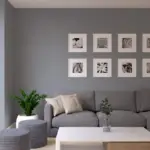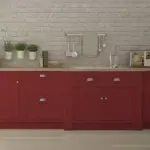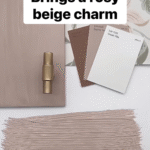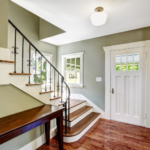Moving into a new home is an exciting adventure, but one decision that often feels overwhelming is choosing the right paint colors for your walls. Having been through this process before, I can confidently say it’s both thrilling and, at times, downright stressful.
Deciding on a color palette for your entire home can feel like a monumental task. In fact, it can be a bit traumatizing. If you’re feeling stuck, you’re not alone! I’ve even written a blog post on how to start decorating your home when you have no idea where to begin—and my number one tip is this: live in your space for a while before committing to paint colors.
Once you’ve spent some time understanding the lighting, layout, and vibe of your home, dive into platforms like Pinterest for inspiration. You’ll discover endless ideas, from trendy hues to timeless classics.

The Art and Science of Choosing Paint Colors
Selecting the perfect interior paint colors is not just about aesthetics; it’s a complex process that requires thoughtful consideration. You’ll need to weigh your personal preferences, design goals, and the functionality of each room.
Color Psychology: The Hidden Power of Paint Colors
A popular and effective approach to choosing the right paint color is understanding color psychology—how different hues influence emotions and the atmosphere of a space.

Pro Grade Paint Roller Kit, Brush & Roller for Professionals & Homeowners
Perfect for smooth finishes on your interior walls. Ideal for home improvement enthusiasts!
Buy Now on Amazon- Soothing Shades: Light blues and greens are perfect for creating a calm and restful ambiance, making them ideal for bedrooms and bathrooms.
- Warm and Energizing Tones: Yellows and oranges evoke energy and happiness, making them suitable for social areas like living rooms and kitchens.
While it’s helpful to understand the emotional impact of colors, always remember to prioritize how the color makes you feel in your space.
Lighting: The Game-Changer in Paint Selection
Natural light is one of the most important factors to consider when choosing paint colors. The same color can look dramatically different depending on the amount and type of light in the room.
- Sunlit Rooms: Spaces with plenty of sunlight can handle deeper, richer colors.
- Dimly Lit Rooms: Lighter, reflective shades work best in areas with limited natural light, creating a bright and airy feel.
Tip: Sample, Sample, Sample!
Testing paint samples in your home is a crucial step. Paint colors can vary significantly depending on the time of day, the lighting, and even the direction your windows face. I swear by Samplize for paint samples—they allow you to see how the color looks on your walls over a few days before making a decision.

Psychology of Colors: Understanding Warm and Cool Tones
Warm Colors
Warm tones like red, orange, and yellow bring a sense of warmth, energy, and comfort. These are excellent for spaces like kitchens and dining areas but should be used cautiously in bedrooms as they may overstimulate and disrupt sleep.
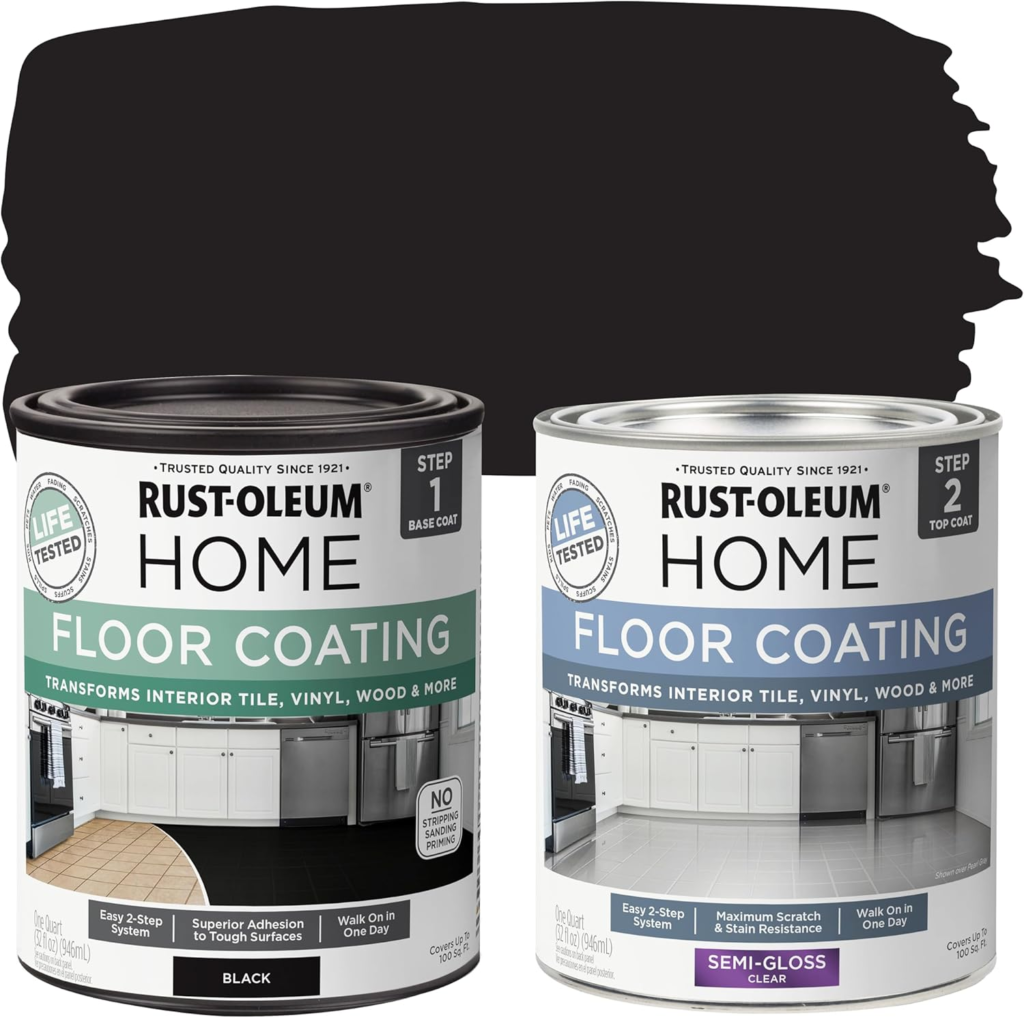
Rust-Oleum 367605 Home Interior Floor Coating Kit, Semi-Gloss Black
Ideal for updating outdated flooring at a fraction of the cost of replacement and adheres without stripping, sanding or priming.
Buy Now on Amazon- Red: Evokes passion, excitement, and energy.
- Orange: Radiates optimism, enthusiasm, and sociability.
- Yellow: Promotes happiness, concentration, and clarity.
While bold warm colors have fallen out of favor in recent years, trends often come full circle. Who knows? We might see a resurgence of red kitchens soon!
Cool Colors
Cool tones such as blue, green, and purple are timeless and versatile. They are calming and tranquil, making them ideal for bedrooms and bathrooms. These colors also balance out warm tones, creating a harmonious look.
- Blue: Conveys calmness, trust, and stability.
- Green: Represents growth, harmony, and relaxation.
- Purple: Symbolizes creativity, luxury, and wisdom.
For example, I painted my front living room and dining room Light Blue by Farrow & Ball, and the cool tones pair beautifully with the warmer accents in the room.

Room-Specific Color Recommendations
Living Room
The living room is often the heart of the home, so choosing the right color is key. Neutral tones like gray, beige, greige, and off-white create a welcoming atmosphere and complement various design styles.
- Gray: Light grays feel airy, while darker shades create a cozy, sophisticated vibe.
- Beige/Greige: Warm and versatile, these tones pair well with most furniture and décor.
- Off-White: Timeless and adaptable, off-white is perfect for creating a blank canvas.
For my own living room, I chose Silver Drop by Behr, and it remains one of my favorite paint colors to date.
Kitchen
Kitchens lend themselves to vibrant, food-inspired colors like green, blue, and yellow. These shades are not only cheerful but also functional in enhancing the kitchen’s ambiance.
- Greens: Fresh and energizing.
- Blues: Calm and clean.
- Yellows: Bright and cheerful.
Since my kitchen has limited wall space due to cabinets, I carried Silver Drop into this room, and it blends seamlessly.
Bedroom
Bedrooms should promote rest and relaxation. Soft, cool tones like blue, green, and lavender work wonderfully here.
- Blues: Encourage sleep and tranquility.
- Greens: Provide a touch of nature and serenity.
- Lavenders: Gentle and soothing, perfect for unwinding.
My bedroom is also painted Silver Drop—a testament to how versatile and calming this color is!
Bathroom
Bathrooms benefit from light and spa-inspired hues like white, light blue, and soft green.
- Whites: Clean and fresh, a classic choice.
- Light Blues: Reflective of water, creating a serene space.
- Soft Greens: Calm and earthy, reminiscent of a spa.
My kids’ bathroom is painted Simply White by Benjamin Moore, and it’s both crisp and inviting.
The Role of Paint Finishes
The type of paint finish can significantly affect a room’s look and functionality.
- Matte: Best for low-traffic areas, offering a soft, non-reflective finish.
- Semi-Gloss: Durable and easy to clean, ideal for kitchens and bathrooms.
- Gloss: High shine and durability, perfect for trims, doors, and cabinets.

Design Tricks for Small Spaces
When working with small spaces, lighter colors and matte finishes are your best friends. They reflect light and make the room feel larger. However, darker shades can create a cozy and intimate atmosphere when used strategically, like on an accent wall.
Trends in Interior Paint Colors
Paint trends are leaning towards calm, earthy palettes, including muted pastels like soft blue, pink, and green. Neutral tones like beige, gray, and off-white remain popular for their timeless appeal.
Bold jewel tones like emerald green and deep blue are also making a comeback, adding depth and character to modern homes. Nature-inspired hues, such as sage green and terracotta, continue to grow in popularity.



